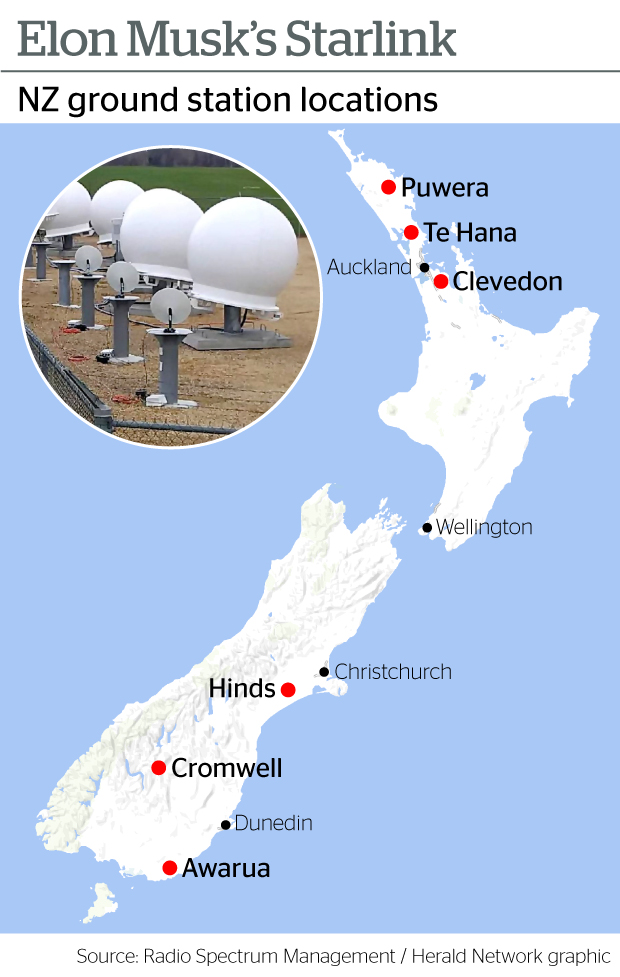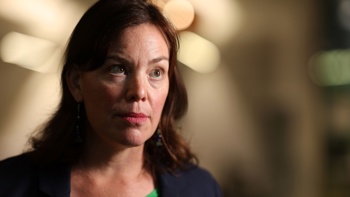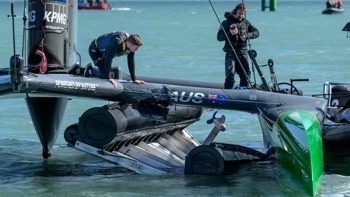The company formerly known as Vodafone NZ formally started trading as One NZ today - and marked the occasion by revealing a partnership with the Elon Musk-owned Starlink.
For the 10,000-plus Kiwis who’ve bought one of its install kits, or those who used one during Cyclone Gabrielle, Starlink means a satellite dish you can buy at Noel Leeming, then plonk on your roof to get $159/month unlimited data internet via thousands of Starlink satellites that swarm the Earth at a low orbit.
But the One-Starlink partnership is about filling gaps in the carrier’s network. All of them.
It follows one already signed between Musk’s company and one of the big network operators in the US, T-Mobile. That deal will see T-Mobile users able to send texts via Starlink by the end of the year, when out of usual cellular coverage areas, with voice and data via Starlink to follow.
One NZ says its customers will be able to send texts via Starlink’s Direct to Cell by “late 2024″ with voice and data to follow.
Neither side has disclosed commercial terms. One says the service will cover 100 per cent of NZ’s landmass from 50 per cent today - something that CEO Jason Paris said was keenly felt during Cyclone Gabrielle amid power and fibre cuts.
Both T-Mobile and One are waiting on Starlink to launch around 2000 “second generation” satellites to enable the mobile network tie-up. SpaceX has said the second-generation birds require its new, larger Starship rocket to launch. Starship hasn’t launched either, but could have its maiden flight as early as this month.
Separately, 2degrees this morning said that it would trial a similar service provided by US low-Earth orbit satellite operator Lynk.
2degrees CEO Mark Callendar said: “While full LEO satellite mobile services are some way away, we’re testing capabilities in this area to ensure 2degrees customers are set to benefit as Lynk LEO satellites are deployed.” Lynk’s service is expected to launch across the Tasman “within months and support nearly all modern handsets”.
Spark has been asked for comment on any LEO plans.
/cloudfront-ap-southeast-2.images.arcpublishing.com/nzme/LE3L34KLXNB3VLOMWWR3W7PQSQ.jpg) Jason Paris and One NZ today marked a major occasion by revealing a partnership with the Elon Musk-owned Starlink. Photo / Michael Craig
Jason Paris and One NZ today marked a major occasion by revealing a partnership with the Elon Musk-owned Starlink. Photo / Michael Craig
As the T-Mobile deal was announced, Musk called the setup a “celltower in the sky”.
We already know the technology is doable. Late last year, Apple introduced an emergency text via satellite feature for iPhone users in the US, UK and several European countries, in a partnership with low-Earth orbit satellite operator Globalstar (a Rocket Lab client).
/cloudfront-ap-southeast-2.images.arcpublishing.com/nzme/WTTLAGIONZFURJUE6CTQLZHF5Q.jpg) We already know the technology is doable. Late last year, Apple introduced an emergency text by satellite service for iPhone 14 users in the US, UK and a number of European countries, partnering with Rocket Lab client Globalstar. The service works with a stock-standard iPhone 14, but not older models. Photo / File
We already know the technology is doable. Late last year, Apple introduced an emergency text by satellite service for iPhone 14 users in the US, UK and a number of European countries, partnering with Rocket Lab client Globalstar. The service works with a stock-standard iPhone 14, but not older models. Photo / File
Apple’s SOS texting doesn’t require you to buy any specialised hardware. You can make an emergency call using a regular iPhone - but it has to be the latest model, the iPhone 14, which is the only one with the necessary smarts built in (a strong indication that the One-Starlink service is only likely to work with a small subset of recent handsets, at least initially.)
The service also requires direct line of sight to a satellite, so is not a goer if you’re trapped indoors or underground in an emergency.

In a December 2022 application to the US Federal Communications Commission (FCC), Starlink said its second-generation satellites would provide cellphones with: “Voice, messaging, and basic web browsing at theoretical peak speeds of up to either 3.0Mbps or 7.2Mbps peak upload … and up to either 4.4Mbps or 18.3Mbps on the downlink.”
Those are relatively slow data speeds, but the key point is the almost-anywhere coverage, which could prove a literal lifesaver in the event of a disaster.
In the meantime, there are more down-to-Earth issues. New Digital Economy Minister Ginny Anderson has said the communications havoc after Cyclone Gabrielle is likely to be part of the Government’s review of NZ’s response to the disaster.
The early days after the cyclone saw Ngāti Porou distribute dozens of Starlink kits to communities on the hard-hit East Coast as telcos struggled to restore service - in part because of difficulties getting fuel to generators (Starlink kits also require power) and breaks in the fibre cable that connects cellsites to main networks.
Spark has already said that it favours a public-private approach to making cell towers more resilient, modeled on Australia’s response to the “Black Summer” bushfires of 2019/20 - which included the Federal Government shipping in A$38m to cover half the cost of toughening 1000 cellsites through measures such as larger battery arrays for much longer backup power.
The Vodafone NZ to One NZ rebrand follows the 2019 deal that saw the multinational Vodafone PLC sell its New Zealand business to a joint venture between NZX-lsited Infratil and Canada’s Brookfield Asset Management. Each holds a 49.95 per cent stake, with the balance owned by One NZ CEO Jason Paris and five other executives.
TVNZ dispute latest
This is not Paris’s first time at the rodeo. He was number two at Telecom as it rebranded to Spark in 2014 - a move that initially drew criticism but later gained wide acceptance.
The current rebrand he’s involved in has also drawn fire, in part because again a common word is being used (a Companies Office search for “One” yields a 67-page response). In early January TVNZ filed trademark opposition with the patent office. The state-owned broadcaster of 1News said it made the move trigger an extension in discussions over how each party should use “One” branding.
This morning, as Vodafone NZ officially began trading as One New Zealand Group, a One spokeswoman told the Herald that talks continued.
“We are working out the finer details with TVNZ and look forward to continued engagement that enables both companies to operate [effectively],” she said. “There isn’t an issue about whether One New Zealand can exist as a brand.” TVNZ has been asked for comment.
2degrees reseller deal
The Starlink-Vodafone partnership announced today followers other local telco tie-ups.
Starlink earlier named 2degrees as the first local reseller of its business package, which involves a $4200 satellite dish and $840 in monthly fees.
2degrees, along with Cello, also partnered on Starlink’s six local ground stations, used or connecting its satellites to the terrestrial internet - an arrangement it inherited from Vocus NZ (aka Orcon Group) when the two companies merged last year.
Take your Radio, Podcasts and Music with you









